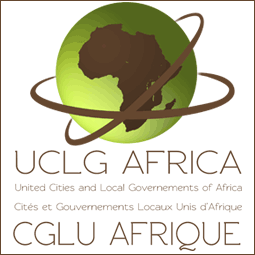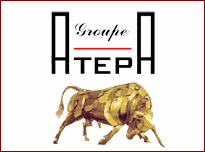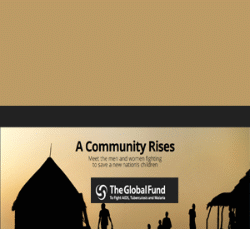Senegal: Senegal Electricity and Power Generation Sector
2011/03/15
Overview
Senegal does not have any indigenous energy sources – except for some natural gas production in Gadiaga, located south of the capital city of Dakar. Therefore it has to rely on oil imports as a source of fuel for electricity generation to satisfy its strong electricity demand – which averages 9 to 10 percentgrowth per year. Demand will continue to grow spurred by a growth in GDP and by the government’s desire to expand electrical coverage throughout the country. The pattern of real GDP growth in Senegal has fluctuated in the past three years, from 2.5 percent in 2008 to a low in 2009 – 1.25 percent – to 4 percent in 2010 and a forecast of 4.4 percent in 2011. This upward trend reflects a recovery in the industrial sector, owing mainly to increased phosphate and cement production and continued strong construction activity.
The government’s large infrastructure projects – roads, new airport, Port of the Future – will contribute to sustained growth in the construction sector. The countrywide household electrification rate reached 33 percent in 2007 – 77 percent in urban areas and 16 percent in rural areas, and is expected to continue to rise. The rural electrification rate will reach 50 percent by 2012, which means that 3.8 million of Senegalese or 365 000 households in rural areas will have access to electricity compared to the current 102 000 households. In addition, the growth in the population rate is 2.8 percent per year.
Senegal’s consumer electricity tariff rate (CFA 105 per KW, around 23 cents at the current exchange rate of 1 USD equals CFA 450) is considered the highest in West Africa. Medium voltage electricity rate is CFA 99 per KW while high voltage is CFA 77 per KW.
The Major Players and the Institutional Framework
Nearly all the country’s electricity supply is generated thermally. Senelec, the state-owned utility, is the major producer with an installed capacity of 700 MW. Senelec accounts for 72.5 percent of electricity’s production while private sector investors licensed as Independent Power Producers (IPPs) have currently a combined capacity of 113.5 MW. IPP’s were first allowed in the industry following the 1998 electricity reform, which called for a public/private partnership in the sector.
In April 2003, the Government of Senegal published an information notice outlining further liberalization of the power sector using public/private partnerships. Production of electricity has become fully private and competitive with Senelec as the sole buyer. On the other hand, transmission and distribution remain a Senelecmonopoly. Senelec will limit its generation ownership to currently owned plants. Under the new BOT act passed by Parliament in February 2004, the government of Senegal authorizes public-private partnership via Build-Own-Operate (BOO) infrastructure projects. All future projects in Senelec’s pipelineneed to follow the BOT scheme.
The other major players in the sector include:
- The Electricity Regulatory Commission (CRSE) established in 1998. The Commission regulates the electricity and power sector, including the approval of electricity tariffs
- The Senegalese Agency for Rural Electrification ( ASER) - created in 1999. ASER has the mission to increase the rural electrification rate..
Market Trends and Investment Plans
The government will vie with market forces as the dominant influence in the sector for many years to come. General Electric was the first Build-Own-Operate IPP to be installed in Senegal in October 2000. The project is a 56 MW combined cycle oil-fired power station. GE is the majority shareholder – 60 percent and the operator of the facility. Edison SPA owns 30 percent and the International Finance Corporation (IFC) the remaining 10 percent. The International Finance Corporation and Credit Commercial de France (now HSBC) are the project finance lenders. The deal is structured as a project finance package, with Senelec being the sole power purchaser under a 15 year Power Purchase Agreement.
In January 2008, President Wade inaugurated the Kounoune power plant, financed by the IFC with a partial guarantee of the World Bank. The government of Senegal in turn lent the “on-lent” fund to an IPP, Mitsubishi and Matelec S.A.L., a division of the Doumet Group from Lebanon. The new BOO plant has substantial generating capacity, which should reach 67.5 MW when it reaches full capacity, boosting the country’s generating capacity to the current 700 MW. The inauguration of Kounoune is a harbinger of more power-generating investments designed to alleviate the current power shortages experienced in Senegal, and in particular Dakar.
Senelec has outlined a vast investment program in the power sector for 2008-2015 at an estimated cost of USD 1.16 billion, subdivided as follows:
• USD 615.5 million for the construction of new power stations
• USD 217.8 million for the transportation
• USD 171.1 million for the distribution network.
• USD 151.1 million for civil engineering works
Senelec has mapped out an emergency program for 2007-2012, which dovetails into the bigger investment plan. This emergency plan, estimated at USD 389 million, addresses Senelec’s current production gap and focuses on the construction of the following new BOO power plants:
- An additional 60 MW plant in Kounoune using the same financing package as Kounoune 1 – an IDA partial risk guarantee combined with an IFC project financing. - The rehabilitation and extension of regional power plants in Ziguinchor and Tambacounda Stymied in its electricity-generation development plans by the high cost of imported fuel, Senelec is turning to coal and hydropower to meet expected growth in demand. Coal and Hydroelectric sources are seen as the most attractive options in the effort to diversify away from diesel-powered plants.
Regional Hydropower Development
The greatest potential for expansion of hydropower production is on the Gambia, Kayanga-Geba and Koliba-Corubal river basins. The Gambia River Basin Development Organization (OMVG) has the overall responsibility for the implementation of the major power infrastructure project in OMVG’s four member states, the Gambia, Guinea, Guinea-Bissau and Senegal.
The OMVG energy project consists in hydro-electricity production, transmission and interconnection of power grids in the four member countries. This pooling of hydropower from the region’s largely unexploited energy potential is set to help end the persistent problems of power shortages and the heavy dependence on imported petroleum products for the production of electricity in the four countries. The project will also promote electrical power trade between the countries; the reliability of energy supply and the reduction in production costs and prices.
If plans go well, the production of electricity will start in 2011-2012. The African Development Bank (ADB)
through its concessional window, the African Development Fund, approved funding of the feasibility studies for USD 5.35 million in 2005. ADB studies have identified all the socio economic and environmental impacts. Specifically, ADB funding involved detailed studies and the preparation of bidding documents for the two hydroelectric power plants and the interconnection of the power grids. The cost of this integrated project is estimated at USD 1.12 billion.
Senegal, Guinea, the Gambia and Guinea Bissau will share respectively 40, 40, 12 and 8 percent of the electricity generated by the two dams.
OMVG has favored a privately operated scheme whereby Sambangalou, Kaleta and the 225 kilovolts transmission line will be managed by private entities. Huge opportunities in consulting work, technical assistance and engineering works remain for U.S. companies, notwithstanding the supply of electricity equipment such as the turbines.
Coal-fired plants
Senegal’s growing reliance on high and volatile crude oil prices as a power source has prompted Senelec, the national utility, to turn to coal-burning power plants considered less costly. In January 2008, Senelec signed a 25-year power purchase agreement with the Swedish operator Nykomb Synergetics for a 125 MW coal-fired plant to be built in Sendou, located in the outskirts of Dakar. The Sendou plant will produce 925 GWh staring in 2011 and will cost CFA 118 billion (USD 262 million). The Sendou coal plant will require port infrastructure for the handling of coal imports, mainly from South Africa, but would also burn domestic peat deposits.
The government of China has agreed to finance the construction of a 250 MW coal-burning power plant; however the bid is yet to be published. With opposition to coal plants rising everywhere in the world motivated mainly by broad fears about coal emissions linked to global warming, only time will tell if coal is a viable alternative to conventional sources of power. As a result, thorough feasibility studies need to be undertaken before Senegal embarks into this new power source.
Agency to fund a feasibility study.
Marketing Biofuel and Ethanol plants to private investors
President Abdoulaye Wade, a long-time advocate of cheaper power sources has been a strong supporter of biofuel and ethanol production. As a result, Senegal is exploring all possibilities to become a major biofuel supplier. There is a serious interest from companies in developing biofuel capacity and integrated biofuel projects in Senegal. For instance, a company is considering a very large investment in ethanol production and would like assurances for long-term leases on agriculture land for expanding the country's sugarcane production.
Another company is discussing with a range of Senegalese officials a possible investment in jatropha plantations for the production of biodiesel, with the possibility of building a biodiesel IPP power plant.
Private ventures for the construction of biodiesel plants are welcomed. Senelec is interested in funding the feasibility study of a 60 MW biodiesel plan Renewable Energy
The government is pursuing other renewable energy schemes, including small-scale, decentralized photovoltaic arrays at the village level. The government has announced plan for a 7.3 MW solar power plant in the Casamance region. Previously, President Wade proposed a long-term project to bring nuclear power to Senegal and the country recently joined the Vienna-based Global Nuclear Energy Partnership. There have also been recent news reports of companies interested in pursuing wind turbine installations in Senegal.
Distribution and Transmission
Rural Electrification
Rural electrification is a priority for the World Bank energy portfolio in West Africa, in conjunction with KFW (the German Development Agency) and The African Development Bank. ASER has subdivided the territory in eighteen in rural concessions, and the concessionaires will be responsible for providing power to rural communities as well as billing and revenue collection.
- Related Articles
-
Senegal: Banking goes mobile
2011/11/26 更多 document.getElementById("bdshell_js").src = "http://share.baidu.com/static/js/shell_v2.js?t=" + new Date().getHours(); -
Senegal: Eye on ecotourism
2011/11/26 Senegal: Eye on ecotourism In the wake of the country’s declaration to strengthen the protection of its national parks, Dakar will host an upcoming UN World Tourism Organisation (UNWTO) conference that aims to increase financing for ecotourism projects throughout West Africa. -
Senegal: Healthy measures
2011/11/26 Senegal: Healthy measures -
Senegal: Focus on fisheries
2011/11/26 更多 document.getElementById("bdshell_js").src = "http://share.baidu.com/static/js/shell_v2.js?t=" + new Date().getHours(); -
Senegal is taking the lead in developing solar energy
2011/11/26 Senegal is taking the lead in developing solar energy
-
- Trending Articles
-
- TUNISIA: Tunisia’s telecoms industry
- MAPUTO CITY: Re-launching tea sector in Mozambique
- ANGOLA: Brazil shipment of liquid natural gas from Angola
- MALAWI: Malawi to send 100,000 youth to work in South Korea
- ETHIOPIA: Catalyst Principal Partners Acquire 50% Stake In Yes Brands
- COLOMBIA: Producers from colombia eye Asia for agro exports





.gif2_.gif?1356029657)







